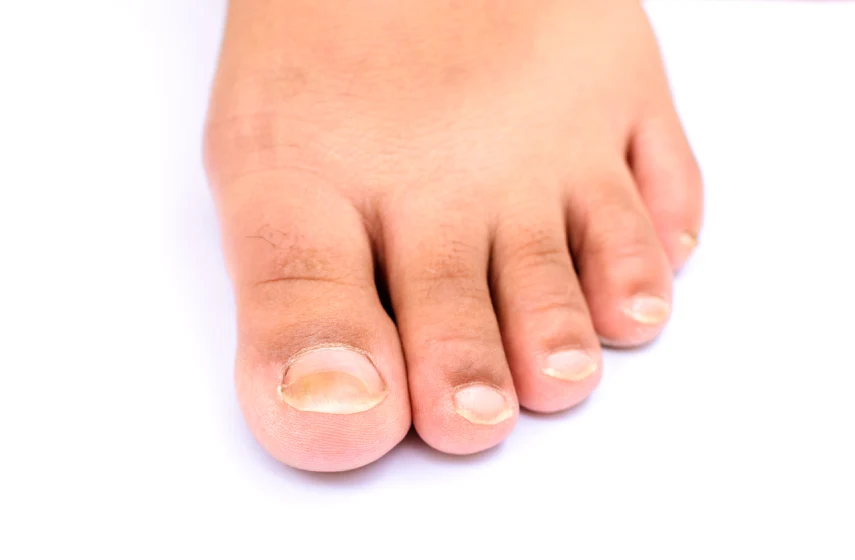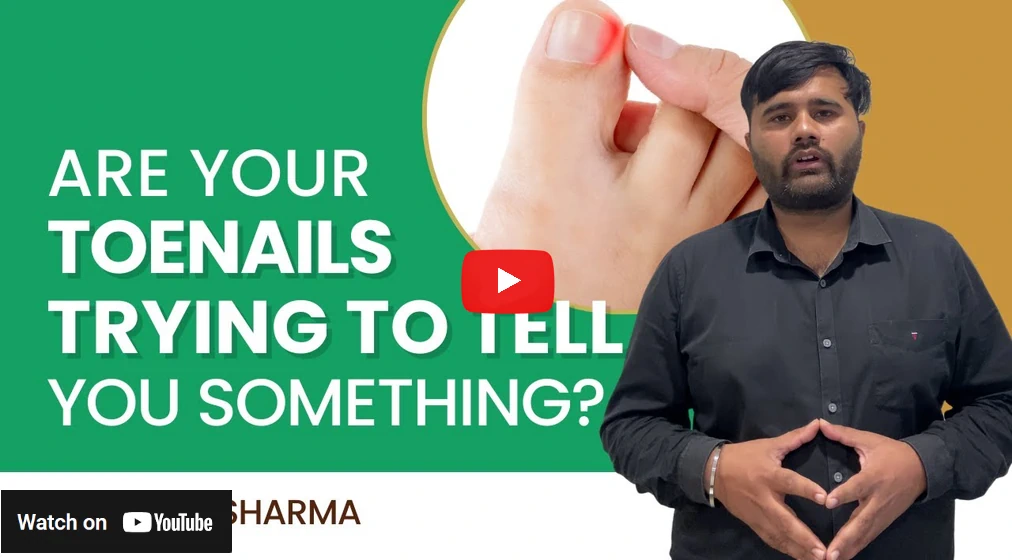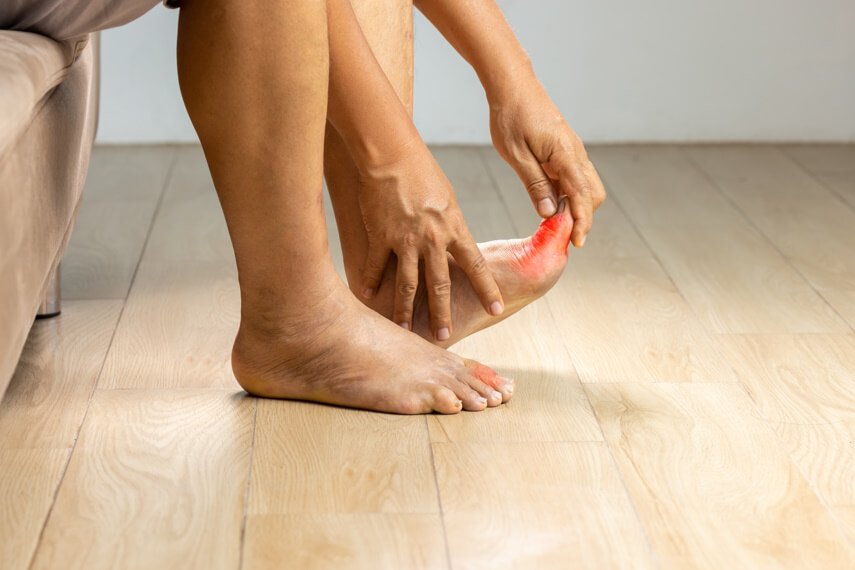Top 5 Signs Your Nails Are Trying to Tell You About Your Health
Our nails not only serve ornamental functions; they are also indicators of our health status all across the board. Most of the time, we ignore changes to our nails as a mere cosmetic issue. However, do you know that the signs of discoloured, thickening, or brittle nails can indicate serious underlying health issues?
These small nail signs and symptoms can range from an ingrown toenail to yellowed nails or ridges that can often speak to more chronic health conditions like diabetes. At Surat Diabetic Foot and Ulcer Clinic, we believe in taking care of our patients in more than one way. Such signs should certainly not be overlooked in those patients who are diabetic and at greater risk of infections and other complications.
Let’s explore the top five signs your nails might be telling you about your health and why you should pay attention to them.
1. Discoloured Nails: A Warning Sign of Underlying Health Issues
Healthier nails should have a pink colour with a white crescent beside the cuticle. Discolouration may indicate an underlying illness. The following are some frequent nail colour variations and their possible causes:
- Yellow Nails: Yellowing may indicate a fungal infection, overuse of nail polish, or in certain instances, lung disease or diabetes.
- White Nails: Pale or white spots on your nails may signify anaemia, liver failure, or diet deficiencies.
- Blue Nails: A blue colour may indicate that your blood is low in oxygen, which is usually related to heart or lung problems.
- Brown or Black Streaks: These may be signs of melanoma (skin cancer) and should be addressed urgently by a medical professional.
If your nails are exhibiting ongoing discolouration, visit a nails specialist doctor for proper diagnosis and discoloured nails treatment. Treating the underlying cause early will prevent further health issues.
2. Thickened or Brittle Nails: Could It Be a Sign of Infection or Diabetes Complications?
Do your nails feel unusually thick or brittle? These changes might seem harmless, but they can indicate underlying health problems.
- Thickened Nails: This is often due to fungal infections, but in diabetics, it can also indicate poor circulation. If left untreated, it can lead to nail infection treatment complications.
- Brittle Nails: Cracking or splitting nails could be due to nutritional deficiencies, frequent exposure to water, or thyroid disorders. Diabetics are also prone to brittle nails due to poor blood sugar control.
If your nails have become thick, brittle, or difficult to trim, it’s time to seek medical help. A nails specialist doctor can determine the cause and recommend appropriate treatments.
3. Ingrown Toenails: Painful and Dangerous for Diabetics
An ingrown toenail occurs when the edges of the nail grow into the surrounding skin, leading to redness, pain, and potential infection.
- Causes: Wearing tight shoes, improper nail trimming, or injury can result in ingrown toenails.
- Risks for Diabetics: Due to nerve damage and poor circulation, diabetics may not notice the pain at first. However, if left untreated, an ingrown toenail can lead to severe infections, ulcers, or even amputation.
At Surat Diabetic Foot and Ulcer Clinic, we stress the importance of proper nail care to prevent ingrown toenails. If you experience discomfort or infection, seek medical attention immediately to prevent complications.
4. Swollen or Red Nails: Signs of Infection or Circulation Issues
If your nails or the surrounding skin appear swollen, red, or tender, this could indicate:
- Paronychia: A bacterial or fungal infection that occurs when bacteria enter the skin around the nail due to cuts or trauma.
- Poor Circulation: Swelling and redness can also result from rest pain, a condition seen in individuals with poor blood flow, particularly diabetics.
- Psoriasis or Eczema: Skin conditions like psoriasis often affect nails, causing swelling, pitting, or changes in texture.
Ignoring these symptoms can worsen the infection and impact your overall health. Nail infection treatment should be sought promptly to prevent further complications.
5. Nail Separation: A Serious Indicator of Fungal Infections or Trauma
If your nails are lifting away from the nail bed, the condition is known as onycholysis, and it may be due to:
- Fungal Infections: Fungi can cause the nail to separate, leading to discolouration and a foul odour.
- Trauma: Repetitive injury, aggressive manicure treatments, or prolonged water exposure can weaken the nail structure.
- Thyroid Disease or Psoriasis: Autoimmune disorders like thyroid disease and psoriasis can trigger nail separation.
To prevent nail separation, maintain good nail hygiene, avoid excessive moisture, and seek nail infection treatment if symptoms persist. Early intervention is key to preserving healthy nails.
Conclusion
Your nails are a reflection of your overall health, and any changes noticed should not be taken lightly. Brittle nails, discolouration, swelling, or separation are all potential indicators of infection, diabetes, or poor circulation.
At Surat Diabetic Foot and Ulcer Clinic, we take a holistic approach to care, especially in the case of diabetics with vulnerability to nail conditions and secondary complications. Regular consultation with nail specialist doctor can diagnose conditions early and avoid severe health consequences.
By being aware of your nails signs and symptoms, you can take steps towards improved general health. If you experience any of these warning signs, you should see a healthcare professional to obtain a proper diagnosis and treatment.
FAQs
How Can Diabetes Affect My Nail Health?
Diabetes can cause poor circulation and nerve damage, leading to brittle, thickened, or discoloured nails. High blood sugar levels also make diabetics more prone to fungal infections.
What Are the Most Common Signs of Nail Infections in Diabetic Patients?
Common signs include nail discolouration, thickening, brittleness, pain, swelling, and foul odour. Left untreated, infections can spread and lead to severe complications.
Can Brittle Nails Be a Sign of Diabetes Complications?
Yes, brittle nails can result from poor blood circulation and high glucose levels, which affect nail growth and strength.
What Should I Do If My Toenail Becomes Ingrown?
Soak your foot in warm water, trim the nail straight across, and avoid tight shoes. If the pain persists, consult a doctor to prevent infection.
How Can I Prevent Nail Separation Due to Fungal Infections?
Keep nails dry, avoid walking barefoot in public areas, trim nails properly, and seek treatment at the first sign of infection.







.jpg)

